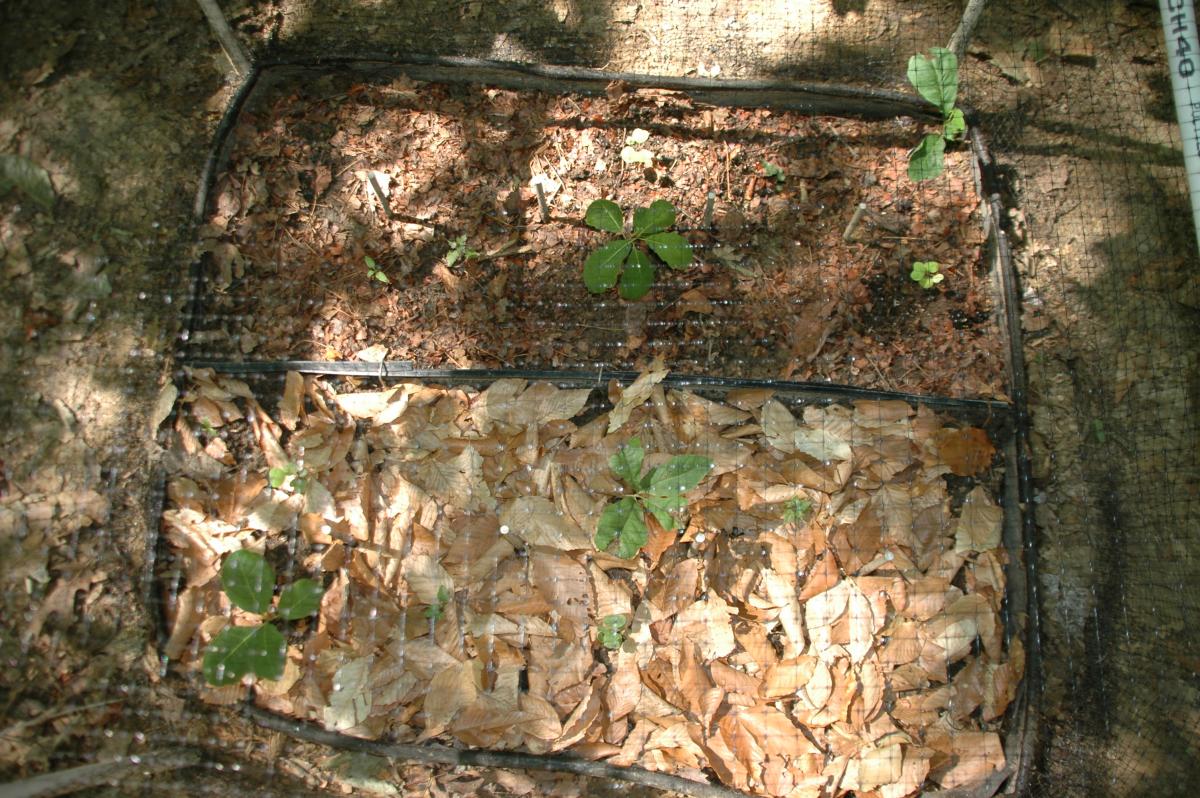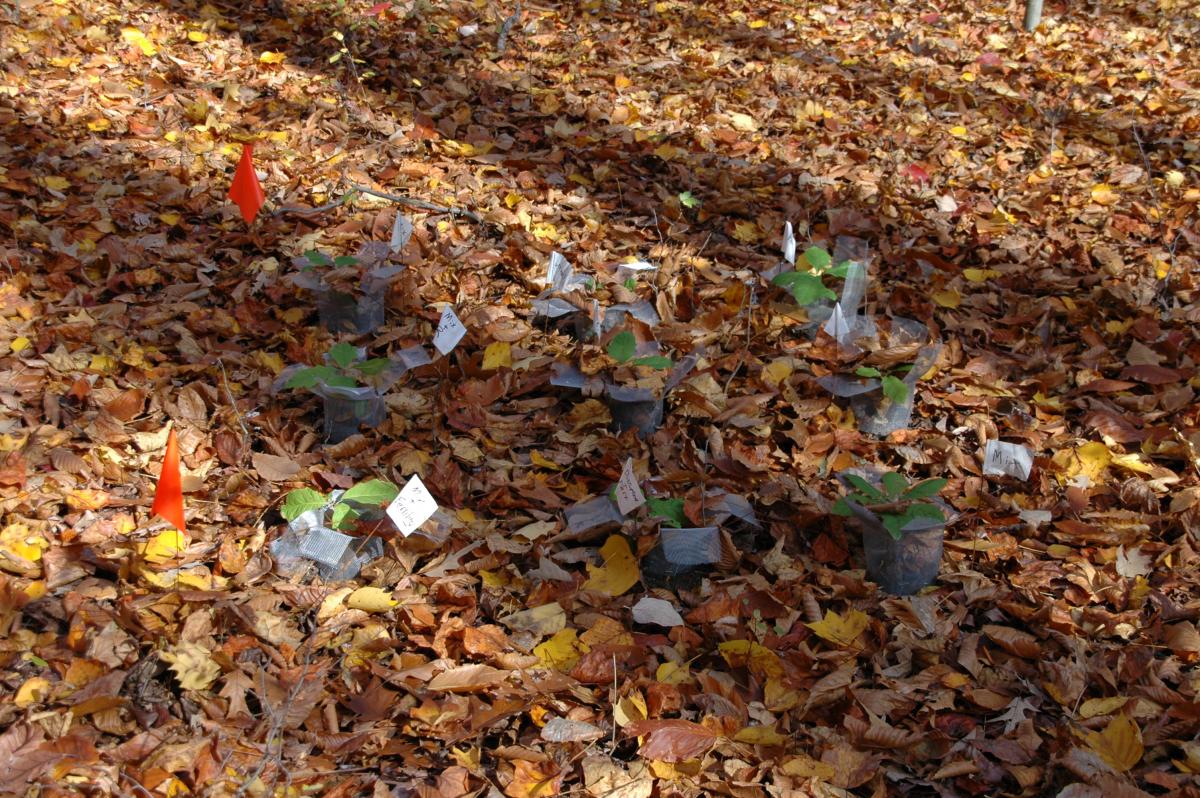Research ProjectMycorrhizal Ecology and Invasive Earthworms
Mycorrhizal Ecology and Invasive Earthworms
Affiliated Labs
Project Goal
Non-native earthworms are widespread worldwide and can dramatically change the soil microbial community. The goal of this project was to understand how invasive earthworm activities affect the mycorrhizal fungi in the soil and how this, in turn, affects tree seedling growth.
Description

Over 80% of land plants rely on mycorrhizal fungi to obtain nutrients and water. Mycorrhizal fungi are a critically important component of the microbial community that determines how plants interact with the soil and with other plants. Because of this important role of mycorrhizae, anything that changes the mycorrhizal fungus community can also change the plants that grow there. Earthworms mix the soil and eat and incorporate surface leaf litter into the soil and dramatically change the environment for microbes, plants and other invertebrates. In a collaboration between labs at SERC and Katalin Szlavecz (Johns Hopkins University) and Richard Pouyat (USFS) we examined the effects of abundant invasive earthworms on arbuscular and ectomycorrhizal tree seedlings and the mycorrhizal fungi with which they associate. In this research, funded by the USDA, we established a set of experimental plots in the forest at SERC where we manipulated earthworm abundance and leaf litter to tease apart the separate effects of forest stand age (and canopy composition) and abundance of non-native earthworms. We established half of these plots in intermediate forest stands (50-70 years post abandonment) that supported abundant non-native earthworms, and half in mature forest stands (120-150 years post abandonment) that supported fewer earthworms, including some native species. We planted each plot with seedlings of two ectomycorrhizal and two arbuscular mycorrhizal trees and monitored seedling growth and mycorrhizal colonization as well as abundance of different fungal groups in the soil in response to different earthworm abundances. We found that abundant earthworms led to decreases in the abundance of both arbuscular and ectomycorrhizal fungi in the soil. These decreases were associated with less growth of tree seedlings that used ectomycorrhizal fungi but not those that used arbuscular mycorrhizal fungi. These earthworm-driven changes in the mycorrhizal community could slow forest succession or oak regeneration after logging.

We also conducted a series of manipulative experiments to understand how earthworm activities affect the abundance of mycorrhizal fungi both in the soil and on host plant roots. This experiment teased apart the separate influences of earthworms eating and mixing leaves into the soil and making more labile nutrients available, favoring bacteria and specific groups of fungi. We found that mixing and other earthworm activities increased the abundance of some fungi, but they decreased the abundance of ectomycorrhizal fungi in mesocosms. The initial findings of this work were published in Biological Invasions.

